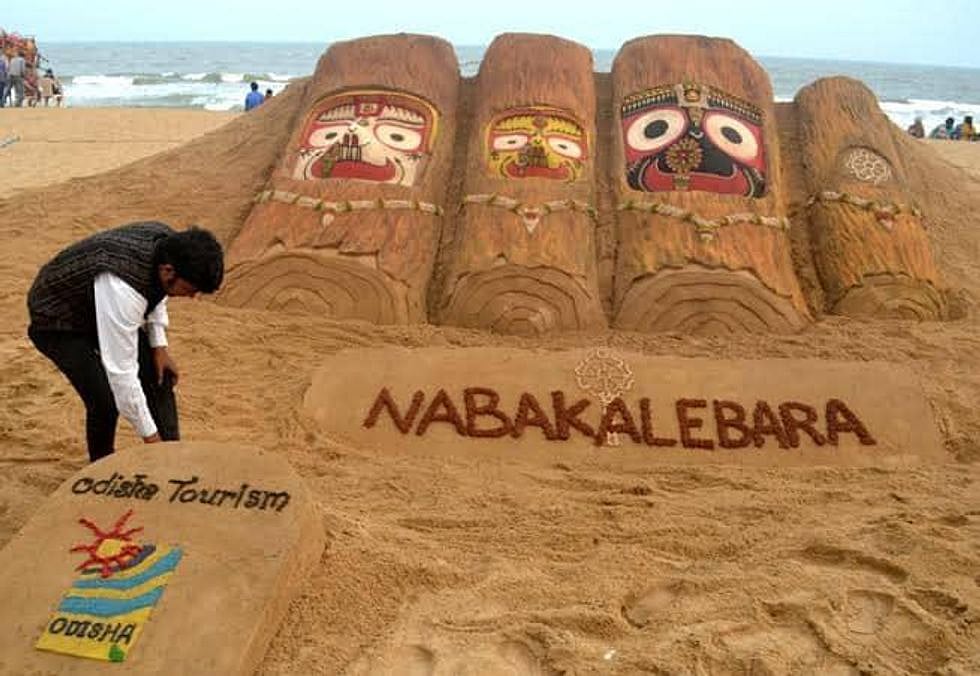The Nabakalebara Festival, an ancient and sacred event deeply rooted in Hindu tradition, carries profound significance that transcends time and culture. This centuries-old celebration, observed in the eastern state of Odisha in India, is not merely a ritualistic endeavor but a representation of spiritual renewal, devotion, and a profound connection between humans and the divine. Let’s embark on a journey to explore the rich tapestry of Nabakalebara and uncover its hidden meanings.
Nabakalebara, derived from the Odia words “Naba” meaning new, and “Kalebara” meaning body, is a spiritual event of paramount importance in the Vaishnavism tradition. The festival involves the replacement of the old wooden idols of Lord Jagannath, Lord Balabhadra, Devi Subhadra, and Sudarshan with new ones, carved from specially chosen Neem trees. This ceremony is a symbolic recreation of the divine form, representing a fresh embodiment of spiritual energy.
Historical Origins of Nabakalebara
Rooted in ancient texts and legends, the Nabakalebara Festival can be traced back to centuries-old scriptures like the Skanda Purana and the Brahma Purana. The event has its genesis in the story of King Indradyumna and the divine guidance he received to locate, carve, and install the sacred deities.
The Meaning Behind the Name
The name “Nabakalebara” encapsulates the essence of rejuvenation and transformation. It signifies the cyclic process of death and rebirth, emphasizing the transient nature of human existence and the eternal cycle of creation.
Rituals and Preparations
Gathering of Sacred Trees
Months before the festival, a group of Daitapatis, the temple servitors, embark on a holy journey to find the perfect Neem trees for carving the new idols. These trees must meet specific criteria, including having four principal branches representing the four deities.
Consecration of New Idols
The process of carving and consecrating the new idols is an intricate and sacred ritual. Skilled artisans meticulously carve the idols, and upon completion, the divine life force is invoked through an elaborate Pranapratishtha ritual.
The Sacred Yatra
The Banajaga Yatra is a pivotal aspect of Nabakalebara, where the Daitapatis embark on a pilgrimage to locate the trees. This spiritual expedition symbolizes the spiritual journey that devotees undertake to seek divine blessings.
Symbolism and Philosophy
Cyclical Renewal of Energies
Nabakalebara embodies the cyclical renewal of cosmic energies. Just as nature rejuvenates itself, the festival signifies the renewal of spiritual energy, allowing devotees to experience a deep sense of spiritual revival.
Essence of Lord Jagannath
The idols of Lord Jagannath, Balabhadra, Subhadra, and Sudarshan are not mere representations but are believed to house the divine spirits. The Nabakalebara Festival reinforces the idea that the divine can take different forms while retaining its core essence.
Cultural and Spiritual Impact
Nabakalebara transcends religious boundaries and has a profound impact on both cultural and spiritual dimensions. The festival fosters unity, harmony, and a sense of shared identity among the people of Odisha, regardless of their faith.
Nabakalebara and Tourism
In recent years, Nabakalebara has gained international attention, attracting pilgrims and tourists from across the globe. This surge in tourism brings economic benefits to the region while also facilitating cultural exchange.
Preserving Tradition in Modern Times
Despite the challenges posed by modernization and the passage of time, Nabakalebara continues to thrive as a testament to unwavering faith and devotion. Efforts are made to strike a balance between preserving tradition and embracing contemporary practices.
The Universal Message
Nabakalebara carries a universal message of spiritual renewal, interconnectedness, and the cyclical nature of life. It encourages individuals to reflect on their own spiritual journey and embrace the concept of constant renewal and growth.
The Allure of Nabakalebara: A Personal Experience
Experiencing Nabakalebara firsthand is a deeply transformative encounter. The air is thick with devotion, and the atmosphere is charged with spiritual fervor, creating an unforgettable experience that lingers in the hearts of devotees.
Celebrating Unity in Diversity
Nabakalebara transcends social, economic, and cultural barriers, uniting people in a common celebration of devotion and spirituality. It serves as a reminder that diversity can be a unifying force.
The Joys of Prasad and Community Bonding
Partaking in the sacred prasad, the blessed food offered to the deities, fosters a sense of community and communion with the divine. Sharing prasad emphasizes the importance of sharing blessings and cultivating a spirit of generosity.
Conclusion
The Nabakalebara Festival, with its deep-rooted rituals and timeless philosophy, serves as a conduit for individuals to reconnect with their spiritual selves, embrace change, and celebrate the eternal cycle of life. As the old gives way to the new, devotees are reminded that life is a continuous journey of growth, renewal, and divine connection.






